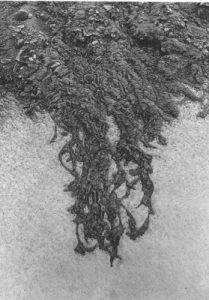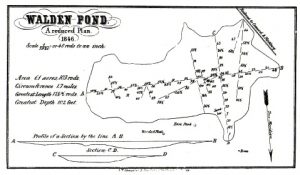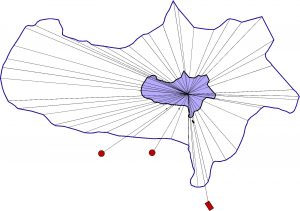Chapter 9 – Interpreting Walden
Thoreau’s famous bathymetric survey anchors his text to the bedrock point d’appui beneath the deep sinkhole of Walden’s western basin. In an even more important point, Thoreau’s interpretation of the sand "foliage" at the Deep Cut climaxes his text as the symbolic manifestation of his "living earth." Through these and other examples, geology becomes Walden‘s chief substrate for poetry. Thoreau’s toggling between scientific and poetic modes suggests a mind with two stable equilibria, something theorists call an "intransitive system."

Sand "foliage" on the snow at the Deep Cut of the Fitchburg Railroad, just northwest of Walden Pond. Thoreau’s description of this inorganic "foliage" became the climax of Walden. Courtesy of Concord Free Public Library, Robbins-Mills Collection, II.1900.4.Box 16 (March 17,1900).

Thoreau’s "Reduced Plan" of Walden Pond, with north arrow unconventionally pointed downward. His discovery that the deepest part of the lake lay at the intersection of length and width inspired a rigorous research project that continued for years.

Radial line plot used to create Thoreau’s "Reduced Plan." This was not a survey map, but the graphic device used to shrink the original, desk-sized trangulated map to the size of a printed page. His use of this device illustrates Thoreau’s understanding of the pond’s radial symmetry.